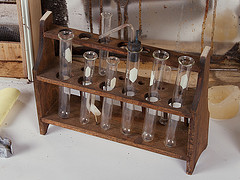How to Maintain Swimming Pool Chemistry Properly

Keeping our swimming pools within its proper water chemistry is perhaps among the greatest ways to keep it safe and clean for its swimmers. By doing this, it can actually make pool owners save hundreds of dollars per year, and endless hours of time. Here are some easy-to-follow steps to fulfill that desired maintenance you can have for your dream pool.
You should sanitize your swimming pool with the right amount of chlorine dissolved into the pool. This chemical combines with the bacteria and other organics found in the water. On a certain molecular level, these harmful contaminants will be cut few. Once the chemical chlorine combines with the bacteria, there will come a point where it becomes inactive. If this so happens, the chlorine will no longer be able to sanitize the pool. The combined bacteria and contaminants along with the chlorine will then be burned off through a process called shock treatment and thus will be removed from the pool thereafter by the filter system present in the pool.
One should also take note of determining the kind of chlorine to use as a pool sanitizer best for the pool that you may have. Usually, these may come in either granular form, 1″ tablets, or 3″ tablets at your choice. So as to easily dissolve the chlorine tablets in the water, floating chlorine feeders, also called automatic chlorine feeders, are spread in the pool area along with the chemical. These are a great help in properly maintaining your swimming pool as they are said to function to slowly meter out precise amounts of chlorine into the pool equipment automatically and are known to be offering a precise control over the amounts of chlorine being added to the pool water. One should take note though that it is never advisable to simply dump chlorine tablets in the skimmer basket of the pool as this may eventually cause premature failure of your pool pump and pool filter equipment.
It is also important to keep pH level at 7.2, same as to human tears. Chlorine works 10 times better at this pH than at a higher or lower pH level. The best way to measure pH level is by using a “drop” type test kit rather than a “test strip” which is oftentimes misread. When the water’s pH level is high, you can lower it by adding muriatic acid at the pool’s end while the water pump is turned on and the water is circulating. When you experience “burning eyes” while swimming, the pH level is possibly to blame, it may be lower or higher than 7.2, not on the chlorine.
Most new swimming pool owners ask what type of chlorine they should use in their swimming pools. The chlorine to be used is dependent on the pool owner’s preferences and the pool maintenance habits. The most common form and inexpensive ones are the 3″ tablets which dissolve slowly and which needs low maintenance.
Swimming pool owner’s should also conduct water testing at least twice a week to ensure the proper pH level and water balance.
Cassandra Cruise writes about inground pools maryland and fiberglass pools maryland.
More Chemistry Articles
